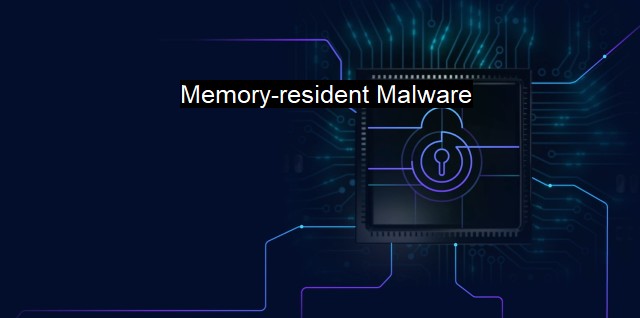What is Memory-resident Malware?
The Risks of Memory-Resident Malware in Cybersecurity: Implications for Antivirus Software and Beyond
Memory-resident malware, often referred to as fileless malware or non-malware, is a type of malicious software that works by infiltrating an operating system's RAM (Random Access Memory) rather than the hard drive, where traditional malware usually operates. This subtle shift in focus has significant implications for the effectiveness of such malware and poses unique challenges for cybersecurity systems and antivirus software.In traditional methods of cyberattacks, malware such as viruses, worms, trojans, and spyware typically lodged themselves in a system's hard drive. This generally involved modifying, blocking, or deleting files, making it relatively easy for antivirus systems to detect and neutralize the threat by searching for significant changes in file structure. In contrast, memory-resident malware is designed to have a minimal or non-existent footprint on the hard drive and instead operates solely or primarily within a system's RAM.
This unique tactic grants memory-resident malware several key advantages over its more traditional counterparts. Firstly, it makes these threats extremely elusive from antivirus systems that historically scanned a system's files stored in hard drives for malware detection. By existing purely within RAM and not manipulating or creating files on the hard drive, this method effectively bypasses those security checks.
Secondly, memory-resident malware has an inherent volatile nature due to the nature of RAM, which only holds data as long as the system remains operative or not rebooted. If the system restarts, all reside in RAM, including the malware, literally disappears, leaving no traces for forensic analysis. Hence, it can perform malicious activities and evaporate instantaneously to avoid suspicion.
Memory-based malware can also persist on a system, in spite of memory volatility, chiefly through sophisticated techniques like hooking into system processes, remaining as deep-seated parasites inside the host system. these malicious applications can also cleverly leverage legitimate system tools or processes, dubbed as 'Living off the Land,' which makes detecting their activities even more challenging for antivirus applications.
Memory-resident malware has found a fertile ground with the advent of highly interactive web content and sophisticated cloud computational platforms. Exploiting vulnerabilities in browsers, plugins, or office scripts, these malicious threats use trusted processes as a stepping-stone before establishing a direct link between the victim system and the control server. In some advanced attacks, they could even persist and reload on reboot with the help of ordinary Windows Registry functions.
The most certain form of defense against memory-resident malware involves a layered security approach that includes stringent access controls, continual software updates, efficient patch management strategies, and comprehensive user training. Organizations should also invest in advanced threat detection capabilities, real-time monitoring, solutions leveraging artificial intelligence, machine learning, and behavioral analysis to recognize and neutralize these stealthy digital threats timely.
Memory-resident malware is very much part of the diversified portfolio of cyber threat actors, further challenging an already complex cybersecurity landscape. Its fileless existence, smart evasion techniques, and explosive growth in the recent years necessitate a paradigm shift in how organizations and individuals approach their security strategies, ensuring we can continue to rely upon and trust in the digital systems that power our modern world.

Memory-resident Malware FAQs
What is memory-resident malware?
Memory-resident malware is a type of malware that loads itself into the memory of a computer or device and resides there, allowing it to evade detection by traditional antivirus software. It can also persist even after a reboot or system shutdown, making it difficult to remove.How does memory-resident malware work?
Memory-resident malware works by using various techniques to inject itself into a process in a device's memory. Some examples of these techniques include DLL injection and process hollowing. Once the malware is in memory, it can carry out its malicious activities without being detected by antivirus software.What are the risks of memory-resident malware?
Memory-resident malware presents several risks to both individual users and organizations. It can steal sensitive data, such as passwords and credit card information, install additional malware, or give hackers remote access to the infected device. It can also spread to other devices on the same network, causing further damage.How can I protect myself from memory-resident malware?
To protect yourself from memory-resident malware, it is important to use up-to-date antivirus software and keep your operating system and applications patched with the latest security updates. It is also a good idea to practice safe browsing habits, avoid clicking on suspicious links or downloading unknown attachments, and use strong and unique passwords for all accounts. Regularly backing up important data and keeping a copy offline can also help mitigate the damage caused by a malware infection.| | A | | | B | | | C | | | D | | | E | | | F | | | G | | | H | | | I | | | J | | | K | | | L | | | M | |
| | N | | | O | | | P | | | Q | | | R | | | S | | | T | | | U | | | V | | | W | | | X | | | Y | | | Z | |
| | 1 | | | 2 | | | 3 | | | 4 | | | 7 | | | 8 | | |||||||